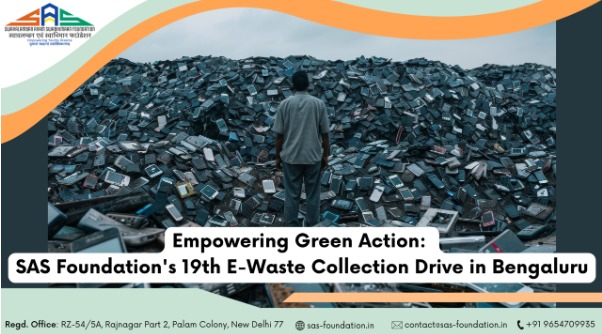📊 The Truth About E-Waste: 10 Eye-Opening Statistics Every Consumer Must Know
In today’s digital age, where technological advancements rapidly outpace their predecessors, we often find ourselves replacing devices faster than ever before. But have we stopped to consider what happens to our discarded smartphones, laptops, or kitchen appliances? The answer lies in a growing global crisis — electronic waste, or e-waste.
E-waste is one of the fastest-growing waste streams in the world, and while our gadgets may become obsolete to us, they continue to impact the environment and public health for years to come. To understand the depth of the issue, let’s explore 10 startling e-waste statistics that underline the urgent need for responsible recycling, regulatory change, and consumer awareness.
1. Only 17.4% of Global E-Waste is Properly Recycled
According to the Global E-Waste Monitor 2020, only 17.4% of the e-waste generated in 2019 was collected and recycled in an environmentally sound manner. The remaining 82.6%? It ended up in landfills, incinerators, or worse — unmanaged informal recycling sectors. This leads to significant environmental contamination, often with long-term consequences for human and ecological health.
2. E-Waste Generated in 2019 Totaled 53.6 Million Metric Tonnes
In just one year, the world produced over 53.6 million metric tonnes (Mt) of e-waste — that’s equivalent to 4,500 Eiffel Towers worth of discarded electronics. Alarmingly, this number is expected to reach 74 Mt by 2030 if current trends continue. Such growth is fueled by increased consumption, shorter product lifespans, and limited repair options.
3. E-Waste Contains $57 Billion Worth of Raw Materials
E-waste is not just an environmental hazard — it’s a wasted economic opportunity. The raw materials found in discarded electronics (gold, silver, copper, platinum, and rare earth elements) were estimated to be worth over $57 billion USD in 2019. Most of this value is lost due to informal or improper recycling methods that destroy these valuable components.
4. Asia Generates the Most E-Waste, but Europe Recycles the Most
In terms of volume, Asia leads global e-waste production with 24.9 Mt, followed by the Americas (13.1 Mt) and Europe (12 Mt). However, when it comes to proper recycling, Europe has the highest documented formal e-waste collection and recycling rate at 42.5%, setting a global benchmark for others to follow.
5. Informal Recycling Puts Millions at Risk
In many developing countries, e-waste is dismantled by hand in unregulated settings, where workers — often including children — are exposed to toxic elements such as lead, cadmium, mercury, and brominated flame retardants. These practices cause severe respiratory issues, neurological damage, and long-term environmental degradation.
6. One Mobile Phone Contains Over 40 Precious Elements
Your smartphone isn’t just a tech marvel — it’s a mini-mine of valuable elements. From lithium in the battery to gold in the circuit boards, recycling one phone can recover more than 40 elements. Yet, most consumers dispose of them thoughtlessly, unaware of their hidden value and environmental cost.
7. Improper E-Waste Disposal Contributes to Climate Change
When electronics are dumped or incinerated, they release greenhouse gases and toxic fumes. Refrigerants from discarded ACs and fridges are especially damaging, with a global warming potential thousands of times greater than carbon dioxide. Responsible recycling helps capture and neutralize these threats.
8. E-Waste Dumping is a Global Injustice
Many developed countries export e-waste to less regulated developing nations under the guise of “used electronics” for reuse. This practice shifts the toxic burden to countries least equipped to handle it, violating global treaties like the Basel Convention and exposing vulnerable communities to grave harm.
9. Recycling 1 Million Laptops Saves the Energy Equivalent of 3,500 U.S. Homes in a Year
According to the U.S. EPA, recycling even a million laptops conserves enough energy to power over 3,500 homes annually. The carbon footprint of producing new electronics is huge, making reuse and recycling vital for reducing our energy and climate impact.
10. Consumer Awareness Remains Critically Low
Despite these alarming facts, global awareness about proper e-waste disposal remains shockingly low. Many consumers still throw electronics in regular trash, unaware of the environmental consequences or nearby recycling solutions.
🌍 Why This Matters to YOU
Each of these statistics paints a clear picture: e-waste is not someone else’s problem — it’s ours. Every purchase we make, every device we discard, contributes to this growing issue. The choices we make as consumers — to recycle, repair, reuse, and rethink — can either help heal the planet or hasten its degradation.
✅ What Can You Do?
Here are actionable steps we all can take:
- Donate or repair electronics before replacing them.
- Use certified e-waste recycling centers in your city.
- Support brands with take-back programs and sustainable manufacturing practices.
- Educate friends and family about e-waste and its impacts.
- Advocate for stronger legislation to regulate e-waste and support the informal sector’s transition to safer practices.
🔔 Stay Informed and Take Action
At Swavalamban Avam Swabhimaan Foundation (SAS Foundation), we’re committed to educating the public about responsible e-waste practices and promoting green technologies, youth empowerment, and circular economy solutions.
Want to dive deeper into these insights and learn how we’re making an impact through our e-waste recycling initiatives? Join our movement towards a greener, more sustainable future.
👉 Subscribe to our newsletter for updates, expert articles, and upcoming drives: LinkedIn Newsletter – SAS Foundation
🔗 Keywords:
e-waste statistics, electronic waste, e-waste recycling, sustainable practices, environmental impact, consumer awareness, corporate responsibility, green technology, circular economy, health risks of e-waste










